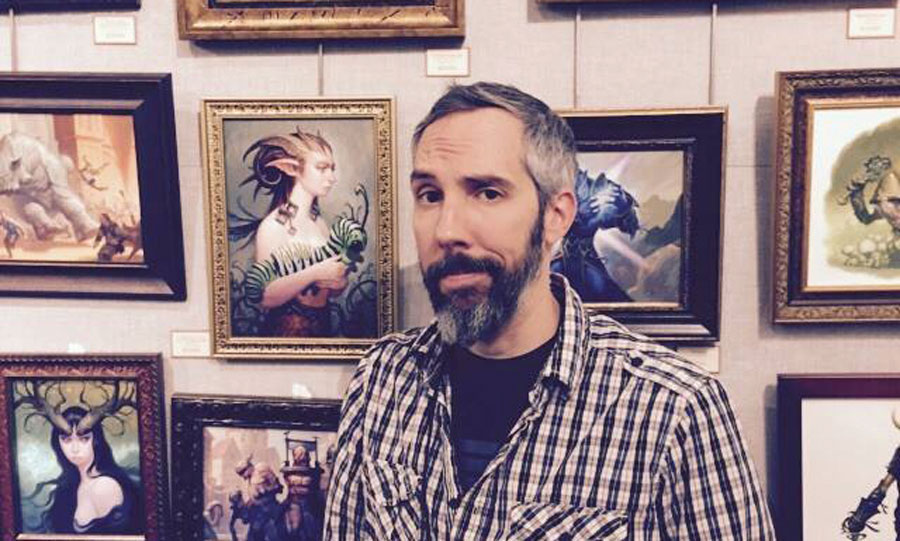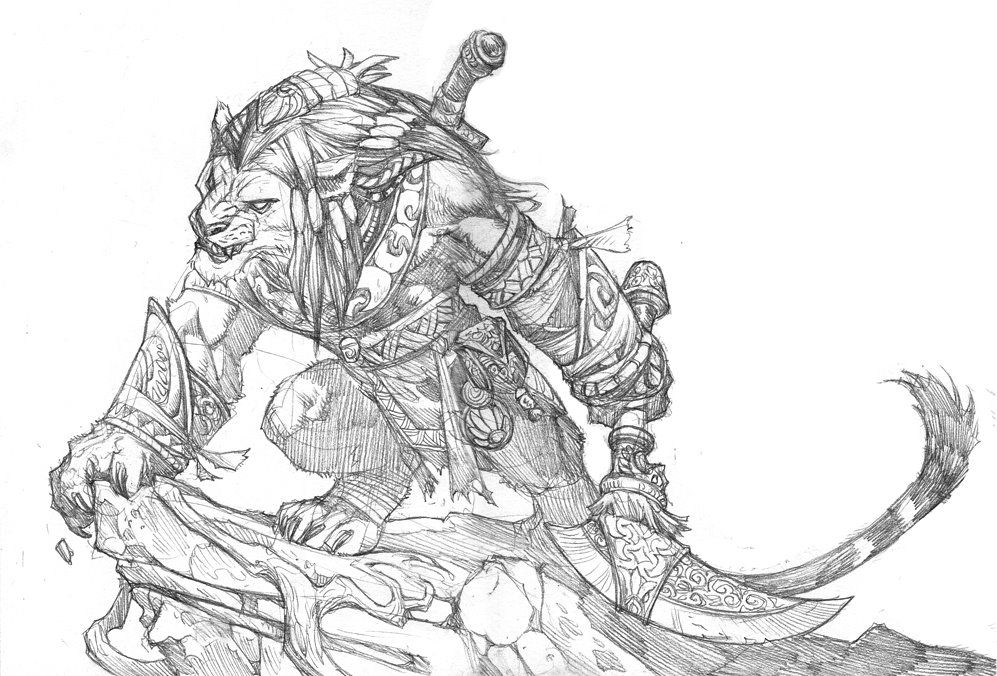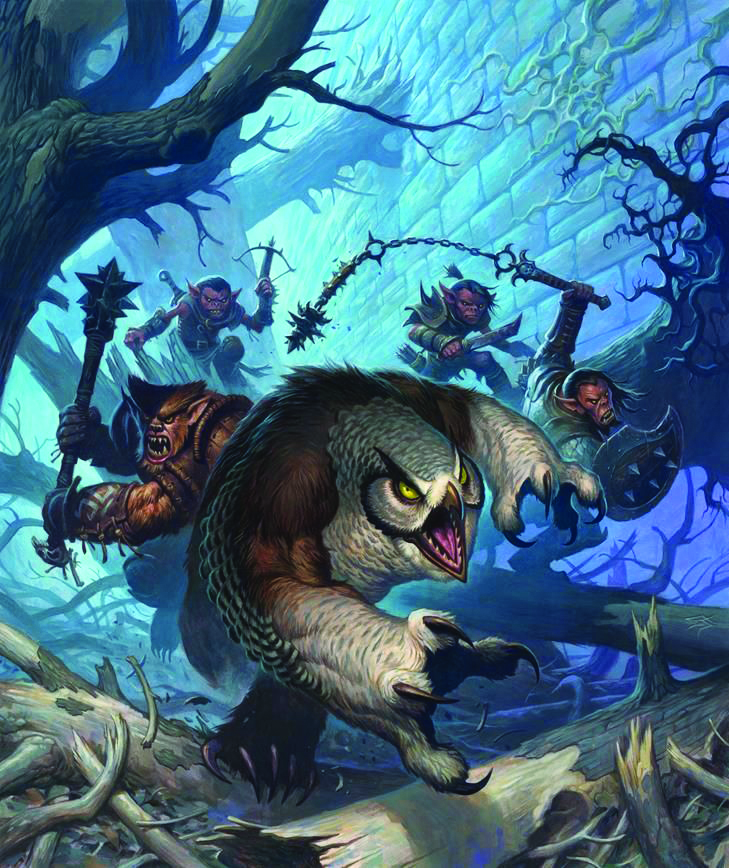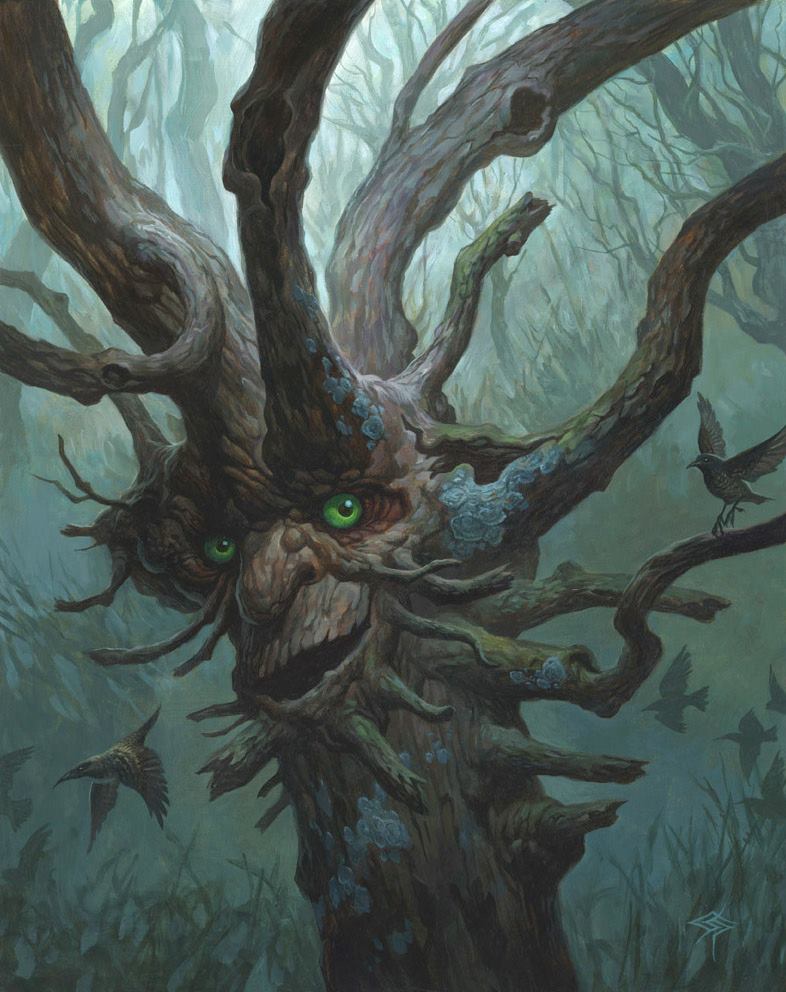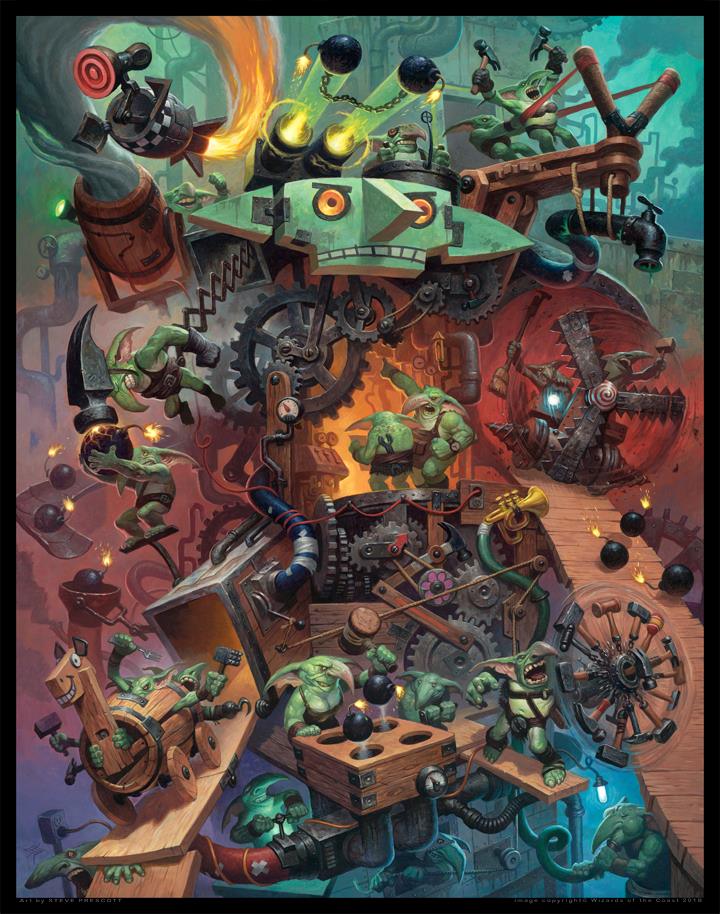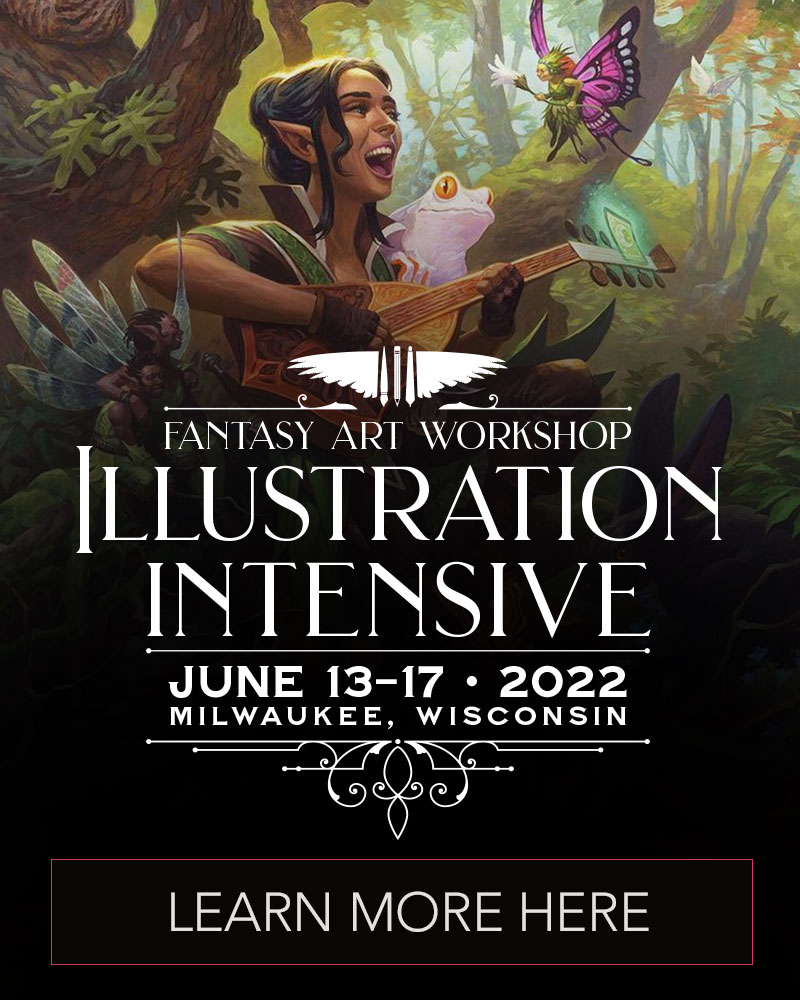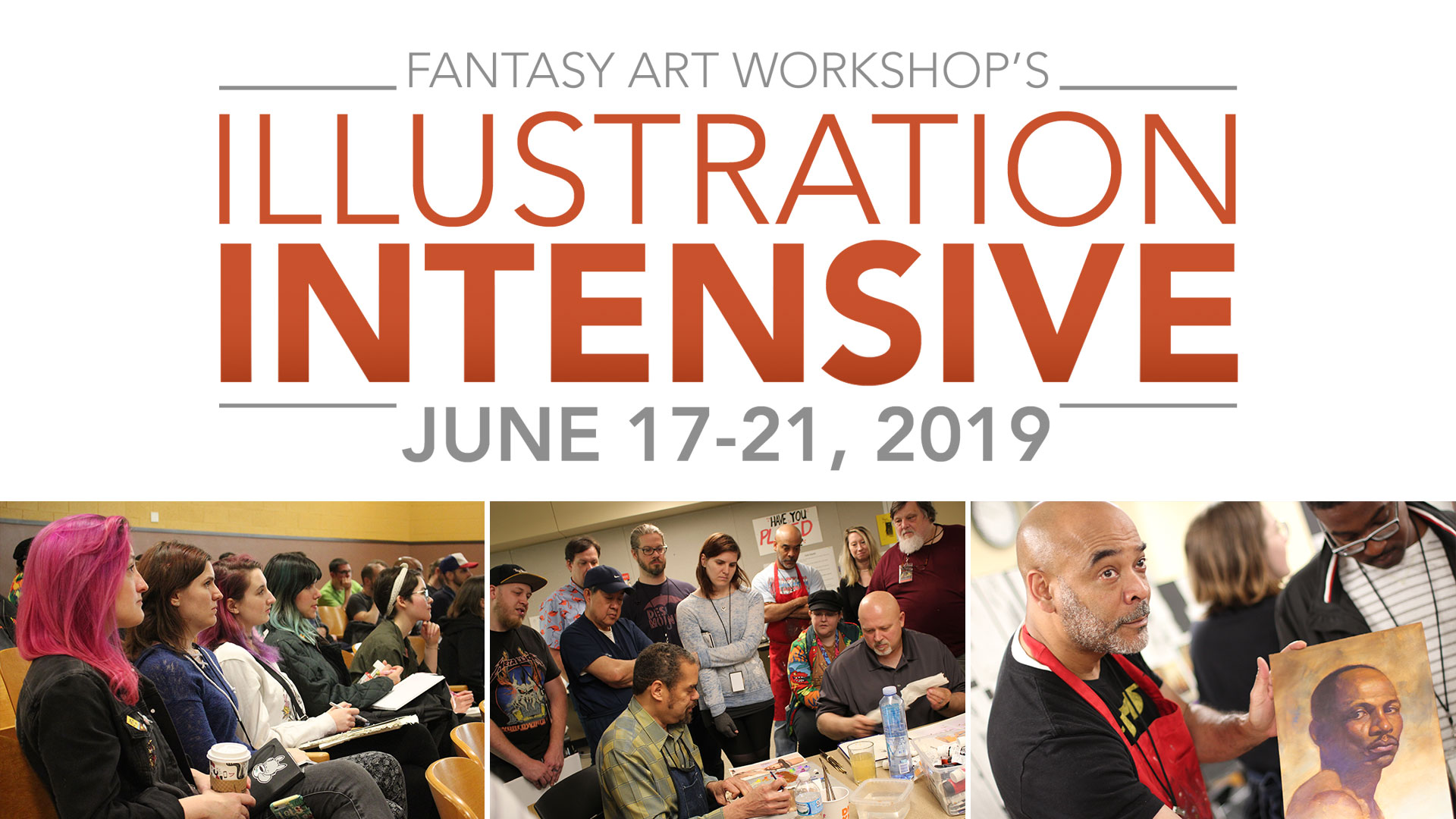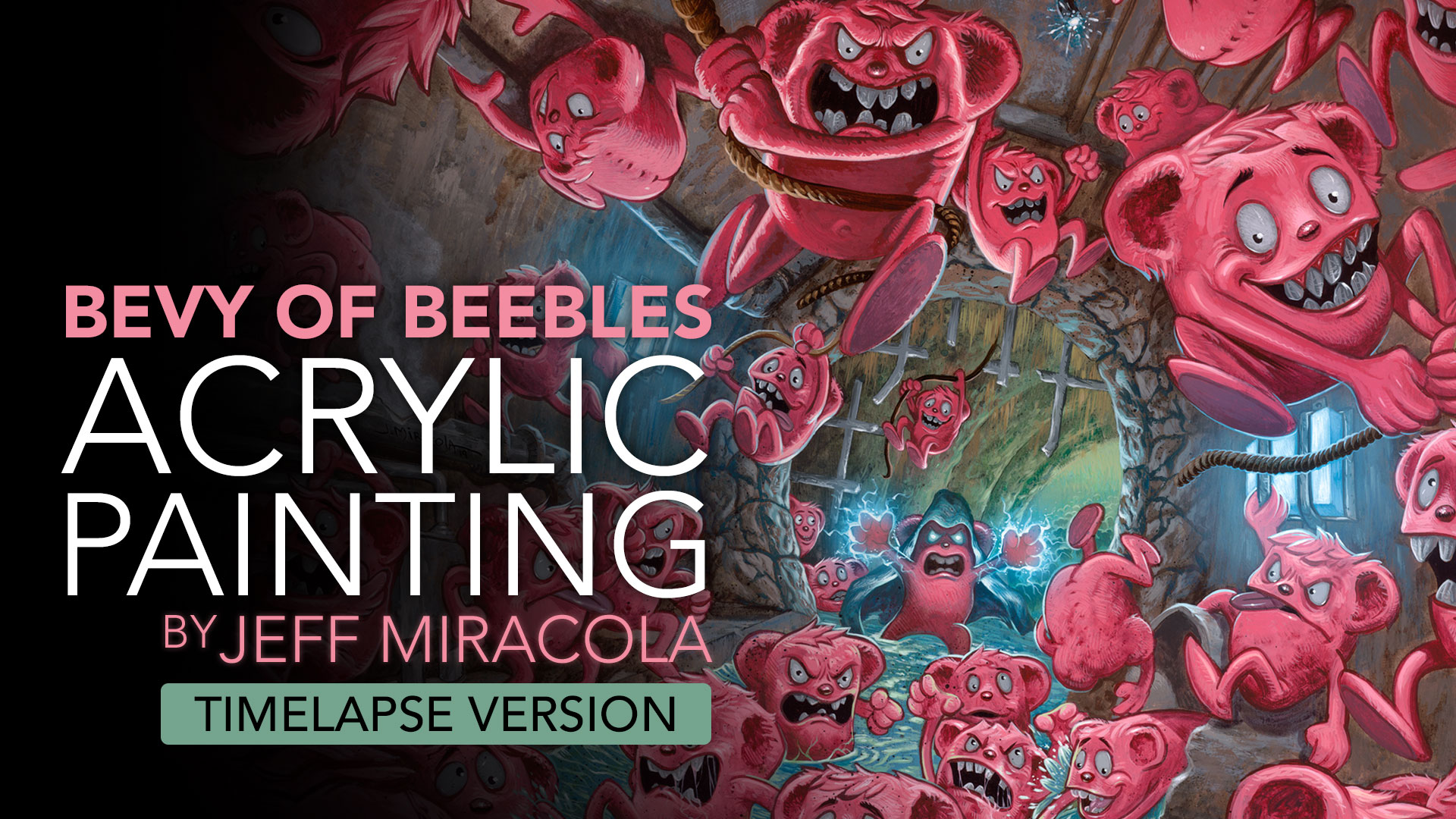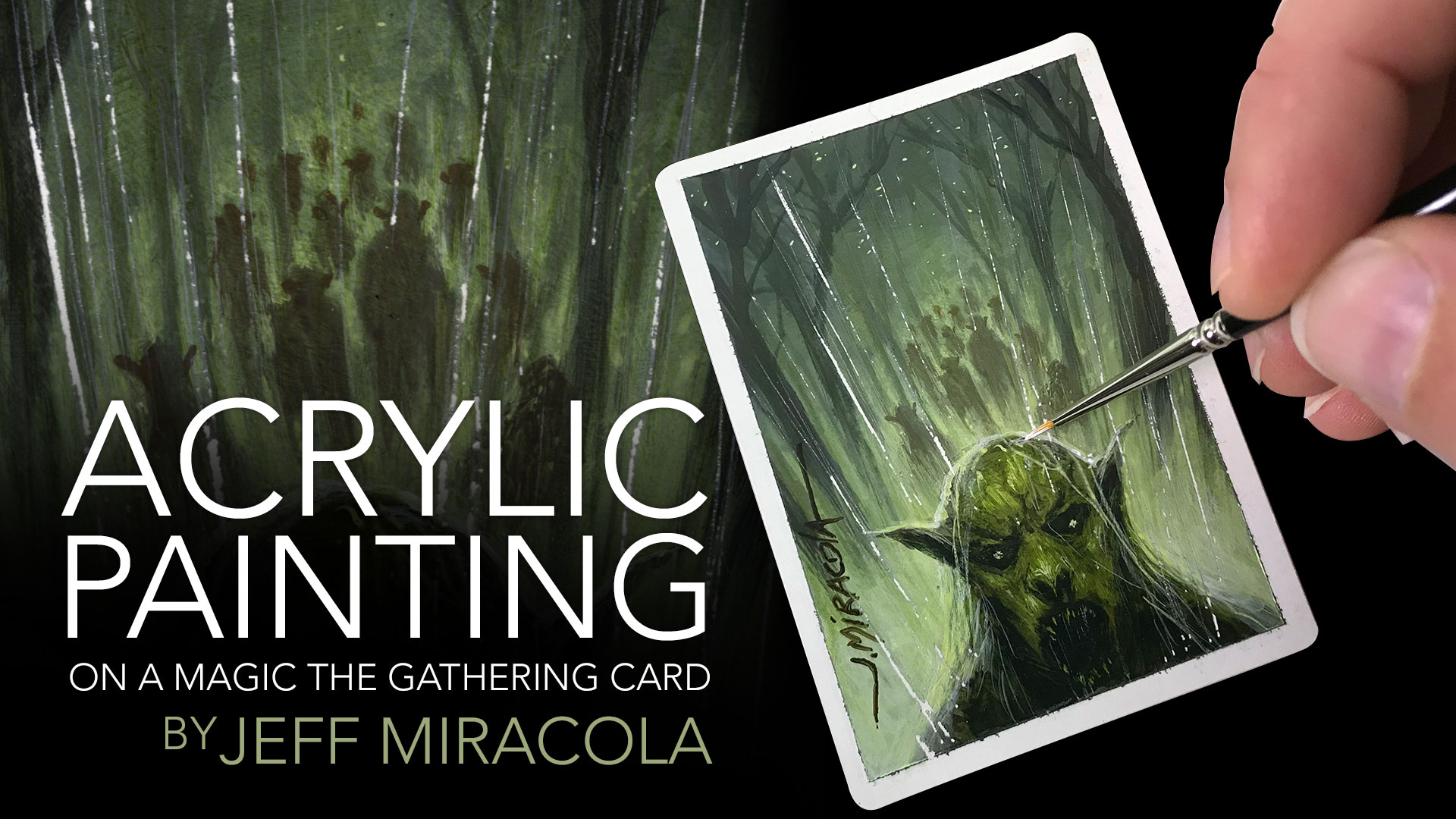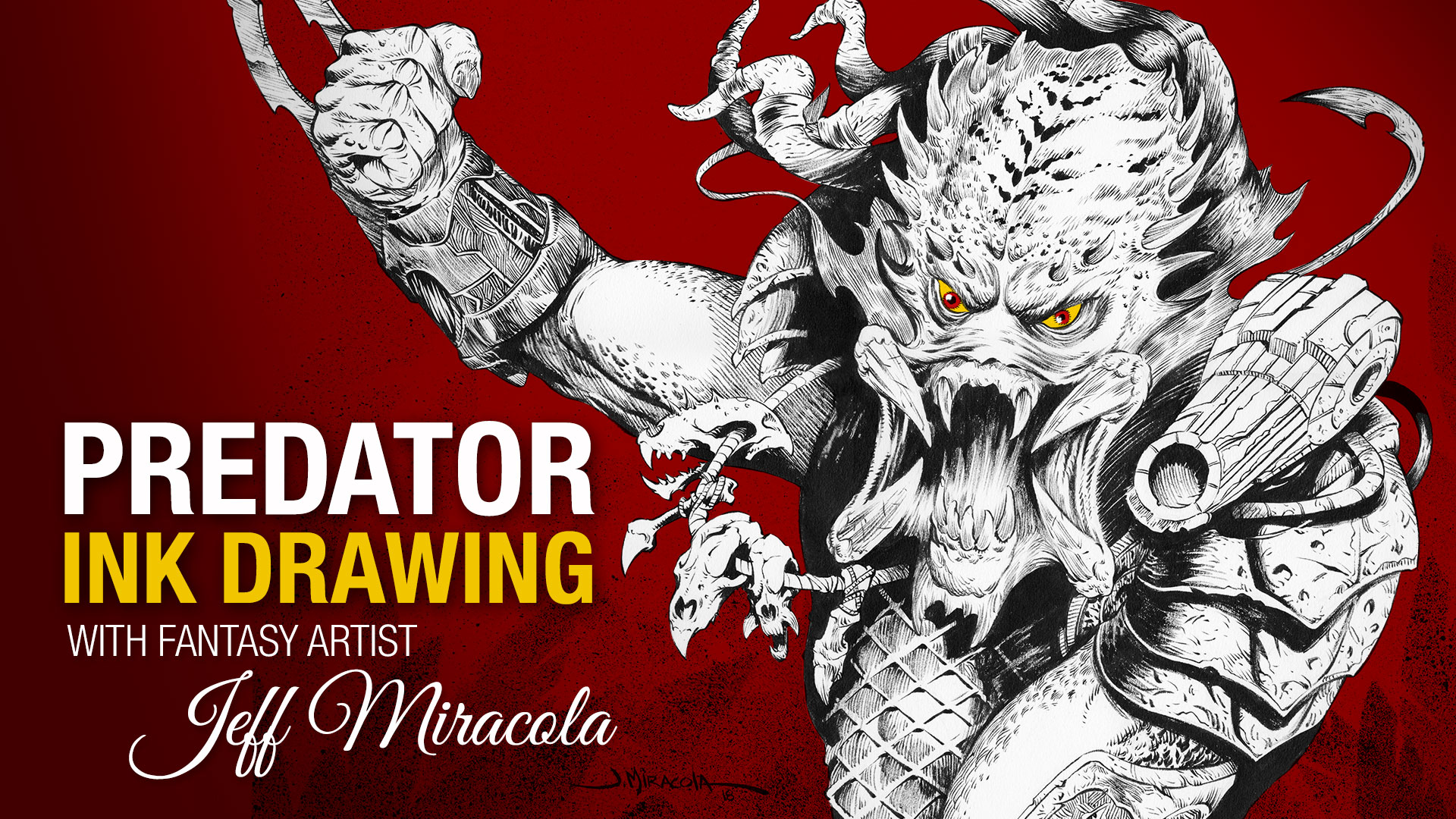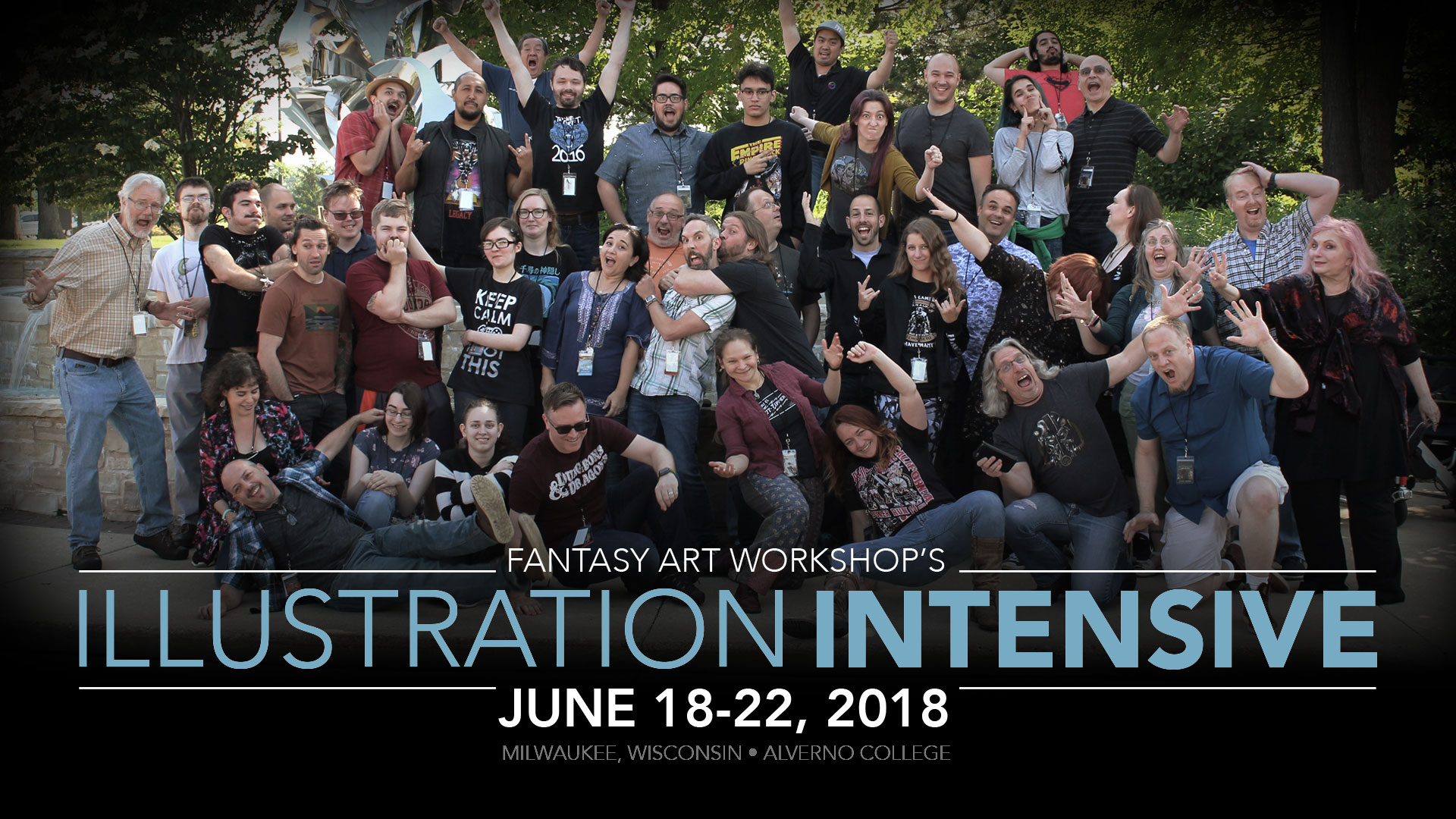
You’re an incredible draftsman with very strong drawing abilities. What advice would you give to artists hoping to strengthen their drawing skills?
The best advice is the most cliche advice and that is to draw a LOT. It’s really the only way it’ll sink in and become muscle memory and second nature. More specifically though, draw a lot of different things. Obviously drawing the human form is the most useful skill set you can have but challenge yourself to draw stuff you normally wouldn’t. All the shapes and forms you start developing an eye for will come in handy at some point. For instance when it comes to drawing and designing monsters, it is extremely useful to know how to draw the different parts of birds, wolves, lions, octopuses, snakes, sharks, bats, toads, etc and know how their anatomy works. But don’t limit yourself even to just human/animal anatomy, take time and draw trees and pay attention to how branches grow and the texture of the bark. Or draw motorcycles, boats, rocks, clothes, architecture. You may never need to draw a motorcycle for the rest of your life but the act of drawing some of those forms will hopefully get logged away and in some way or another become part of your skill set and consciously or subconsciously help you with something down the road.
What do you find most rewarding about being an illustrator? Is it the clients you work with, the properties you get to work on, or something else?
Having created something and been part of developing another world. That world of course might only be one image – or maybe the world is on a bigger scale comprised of hundreds of illustrations. I like playing a part in world design – the bigger the role the better. Outside of the immediate creation of artwork, being part of a huge, worldwide family of fantasy artists (in which I have found and made many terrific friends) is very heartwarming and rewarding.
Organic shapes and materials feature strongly in your work. Why it is that you love to draw and paint trees especially?
They’re about as free form as you can get while still having enough structure to develop character. There is still nuance and some rules to drawing such organic things as trees but within those parameters you have a ton of room and freedom to manipulate design elements. For me, it’s just about breathing room to draw or paint lines and forms going every which way.
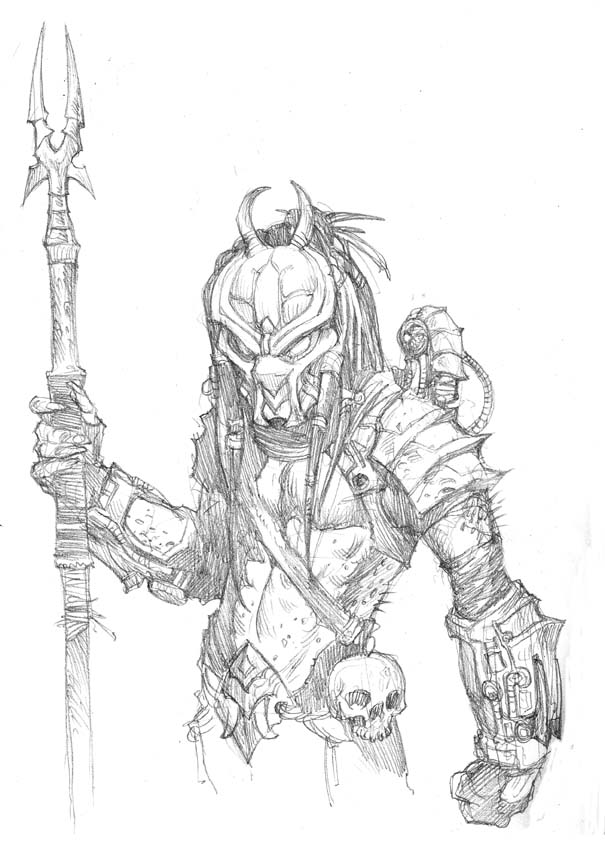 What mentors, books, or philosophy has helped you along your artistic journey?
What mentors, books, or philosophy has helped you along your artistic journey?
While my earliest influences were cartoons and children books, I really didn’t solidly start on my illustration path until high school when I fell in love with genre movies and subsequently started getting into comic books. Stan Winston’s movie FX work may have started the fire, but I started paying attention to the structural elements of illustration (drawing/composition, linework) poring over the Dark Horse movie franchise comics of Aliens, Predator, Terminator, The Thing, etc. Artists like Phil Norwood (notably Aliens vs Predator) and Chris Warner (notably Predator and Terminator among some other books) were big early influences in a short span of time in the late 80’s. Then Mignola came along with his Dracula adaptation series and then Hellboy. It was his stuff that really showed me structure and design and composing with shapes as much as lines. Chris Moeller’s beautiful Iron Empires work in the 90’s showed me one could do the same thing but with paint. Once I left college and entered the gaming industry, I was exposed to tons of new art and artists. Suddenly my biggest influences and mentors were my peers and friends all around me – either directly or just through looking at their work up close and personal.
I have tons of art books and many have been great go-tos when I need some inspiration. Anything Frazetta, James Gurney, John Howe, or Brom, Bernie Wrightson’s Frankenstein, Fantasy Art Techniques of Tim Hildebrandt, DiTerlizzi’s Spiderwick Bestiary, and Terryl Whitlatch’s Star Wars field guide all get pulled off the shelf and opened frequently. More recently, the books with pencil drawings by Victor Kalvachev, Peter Meseldzija, and Mark Schultz have been laying around getting thumbed through, too.
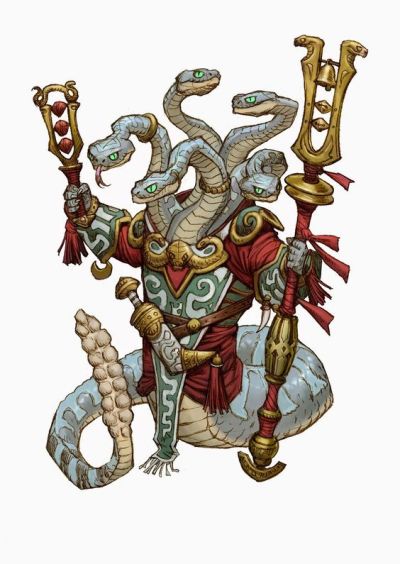
© Steve Prescott. All rights reserved.
Do you have any current or upcoming projects that you can tell us about?
I wish I did so that this interview question would have a more exciting answer! But, outside of my usual spread of Hearthstone, Magic the Gathering, and some private commissions, nothing else solidly in the pipe at the moment, no. Most of my ideas are slow to get rolling! I own the copyright to all the artwork I did for the now defunct app game SoulSpark so I’m searching for an outlet for which I can use that. I have a few ideas and some brand new art I’ve created – just need to apply myself. I’m slowly picking away at more drawings and designs of mythological creatures working toward a larger grand scheme (years away), and taking early notes in plans for a book of all (or a lot of) my creature, character, costume, and concept designs. That’s at least a year out still though.
About Steve
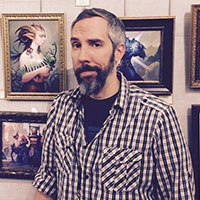 A native to Cleveland, Ohio’s eastside and a graduate of the Columbus College of Art & Design, Steve Prescott has been a freelance artist in the gaming industry since the mid 90’s, working on products from such companies as White Wolf Games, FASA, Paizo, Blizzard, Copenhagen Creators, Hasbro, Animal Planet, Valve, and most notably for Wizards of the Coast, where he has contributed heavily to both Dungeons & Dragons and Magic: the Gathering.
A native to Cleveland, Ohio’s eastside and a graduate of the Columbus College of Art & Design, Steve Prescott has been a freelance artist in the gaming industry since the mid 90’s, working on products from such companies as White Wolf Games, FASA, Paizo, Blizzard, Copenhagen Creators, Hasbro, Animal Planet, Valve, and most notably for Wizards of the Coast, where he has contributed heavily to both Dungeons & Dragons and Magic: the Gathering.
Steve won “Best-in-Show” at the 2007 GenCon, published a book of drawings in 2009 called AGGREGATE, and then another called Steve Prescott’s Alphabet Book of Mythological Beings in 2016, has had work in multiple Spectrum: The Best in Fantastic Art annual publications, did all the illustration work for the app game SoulSpark, has done concept design work for D&D, Magic: the Gathering, Hasbro, Bethesda, Valve, and even worked on pre-production creature designs for the My Little Pony movie (Yes, you read that right.). Somehow in there, he finds time to hastily draw a cartoon to put in his daughter’s lunch every day.
